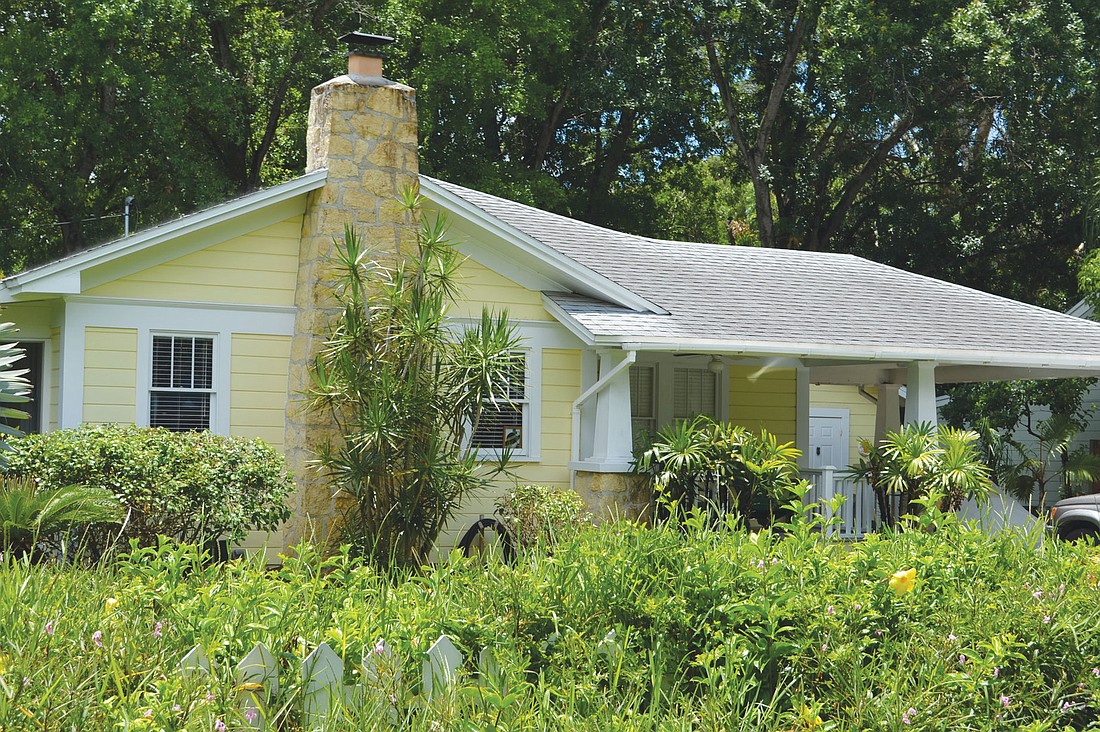- April 23, 2024
-
-
Loading

Loading

Hudson Bayou residents love the great horned owls and other seasonal bird species that frequent the neighborhood.
At the neighborhood’s annual meeting May 18, residents talked about ways to try to make the area better for birds, from promoting native landscaping and bird feeders, to protecting older trees that some neighboring property owners have cut down to make way for new construction.
But preserving trees for birds is only one aspect of a larger struggle for a neighborhood that finds itself in transition from smaller, older homes to new mega-homes that take up the majority of a lot.
Pomelo Place resident Richard Shaffett said he would like to see the neighborhood work closely with the city to limit the number of older pines, oaks and other trees that are cut down to clear way for newly constructed homes.
A neighboring property owner cut down an oak that Shaffett guesses was more than 100 years old.
“It was beautiful,” Shaffett said. “It arched over the street.” The neighbor was making way for the construction of a new home.
Rob Patten, president of the Hudson Bayou Neighborhood Association, says protecting trees is just one thing the neighborhood can do to preserve the scale and character of the neighborhood.
“In my opinion, this neighborhood is about tree canopy, older homes and a central community,” Patten said.
According to Patten, another option would be a different building code for historic neighborhoods in the city, such as Hudson Bayou, that address the scale of new homes that are built.
Patten isn’t opposed to new homes as long as they are designed in an effort to blend in with the surrounding neighborhood. He admires a new modern-designed residence on his street.
Patten also doesn’t want to see property owners told what they can or cannot build, as is done in communities such as Nantucket, that have strict building codes.
But, like other Hudson Bayou residents, Patten has seen the neighborhood’s scale and character begin to change as some property owners raze older homes to “squeeze” a large home onto a small lot and chop down most trees in the process.
“Big houses on small lots pretty much guarantee there won’t be any trees,” Patten said. “Strengthening the city’s tree code would help.”
The city’s tree ordinance only protects certain “grand” trees. Patten said he would like to see an expansion of the kinds of trees protected.
Function of economics
At least three new larger homes are planned for vacant properties where smaller homes were razed in the neighborhood.
Patten is worried if the neighborhood continues to change, it could lose what makes it unique and draws new residents.
“If you destroy the reason people want to move into this neighborhood, then you begin to destroy the neighborhood,” Patten said.
Hudson Bayou resident Michael Schneiderman said he has seen a lot of older homes demolished, and he doesn’t like the outcome. Schneiderman raised the issue about mega-homes during the May 18 meeting.
“Most of the lots in this area are small,” Schneiderman said.
Schneiderman cited a new home at the corner of Orange Avenue and Prospect Street, at 1601 Prospect St., as an example of a home that he thinks is way too big for the property on which it sits.
City Commissioner Susan Chapman, who had previously served as president of the neighborhood association, agreed that the white Guy Peterson-designed home on Prospect Street is “stark and imposing.”
“It was a house, as we understand it, that was designed for a larger lot,” Chapman said.
Homebuilder John Cannon, president of John Cannon Homes, Inc., has two new homes he plans to build for clients in Hudson Bayou.
The transition to larger homes in the area is largely a “function of economics” as properties become more desirable and more expensive. And people who want new custom-built homes want more space, Cannon said.
“To a certain extent, it’s urban renewal,” Cannon said.
Cannon also said the city has a series of regulations that limit height, setback and how close in proximity structures can be.
But, when designing a home in an established neighborhood such as Hudson Bayou, Cannon tries to design it so that the new fits in with the old.
Eight months ago, Cannon built the home at the southeast corner of Wisteria Street and Osprey Avenue to reflect the character of older homes. The new home features a distinct Spanish revival-style, and mature landscaping borders it, including an oak tree in the front yard. The home sits a few blocks south of the Hudson Bayou neighborhood, but it showcases the homebuilder’s effort to blend new with the old.
“Although it is a new home, I wanted it to fit into the neighborhood,” Cannon said. “We made it look like it had been there for many decades.”
Whenever new homes come in to an established neighborhood, there is the possibility for disagreements he said.
“A property owner might want one thing, and a neighbor may want another,” Cannon said.
Continuing challenge
Chapman doesn’t think the issue of mega-homes in Hudson Bayou will make it onto a City Commission agenda in the near future, unless more residents and other neighborhoods voice concern about the issue.
The issue could surface at the end of the month, however, when commissioners begin discussing a possible form-based code that could change the city’s zoning guidelines.
“A form-based code has a lot of design requirements or design guidelines in it,” Chapman said during the May 18 Hudson Bayou Neighborhood Association meeting. “One of the things we as a neighborhood need to look at, if this happens, is what we want to look like.”
Patten said Hudson Bayou is transitioning, and the change is going to continue to be a challenge for the neighborhood.
“This concerns me, too, the character of the neighborhood changing,” Patten said. “We have a specific character. We are OK with change. But let’s do it in a way that is consistent.”